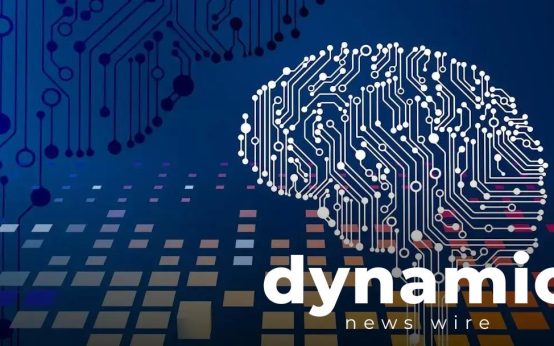The Future of Serverless Architecture is shaping the next generation of cloud computing solutions. By leveraging serverless technologies, businesses can enhance flexibility and reduce costs. This post explores the main benefits, challenges, and security considerations to keep in mind as developers adopt this paradigm. Understanding these elements is crucial for anyone looking to future-proof their infrastructure and software development practices.
Understanding Serverless Technologies
Serverless technologies are a significant advancement in cloud computing, revolutionizing the way applications are developed and deployed. At its core, serverless architecture allows developers to build and run applications without managing the underlying infrastructure. This is achieved by relying on cloud providers to automatically allocate the necessary resources.
Contrary to its name, serverless does not mean the absence of servers. Instead, it emphasizes the abstraction of server management tasks. Developers can focus more on writing code, while the operational aspects are handled automatically. This is possible through services like AWS Lambda, Azure Functions, and Google Cloud Functions, which enable the execution of code in response to events without manually provisioning or managing servers.
Another key feature of serverless technologies is event-driven computing. In this model, the flow of application logic is determined by a series of events, like user actions or system changes. This ensures applications can instantly respond to demands and scale up or down as needed. Scalability is an inherent feature, providing elasticity and helping businesses handle maximum loads seamlessly.
By eliminating the need to manage servers, organizations can achieve faster time-to-market and reduce operational costs. Serverless platforms automatically manage everything required to execute the code with high availability.
Serverless is transforming traditional software development by breaking it down into smaller, composable, and independent units. This not only makes applications more modular but also enhances maintainability and enables quicker updates. Moreover, this architectural shift aligns with the growing trend towards microservices, where applications are seen as a suite of independently deployable services.
Benefits of Adopting Serverless

Adopting a serverless architecture offers numerous advantages that can transform how businesses operate in the digital landscape. One of the most compelling benefits is the cost efficiency. With serverless, you only pay for the computing power you actually use, eliminating the need for constant server maintenance and monitoring.
Scalability is Seamless
Serverless architectures automatically scale to handle the number of requests, meaning that businesses can accommodate a fluctuating load without needing to manage the infrastructure. This automatic scaling is ideal for applications with unpredictable traffic patterns.
Moreover, serverless fosters increased agility and flexibility for developers. With the focus shifted from infrastructure management to code, developers can innovate rapidly and deploy updates efficiently. This speeds up the time-to-market for new features, providing a competitive edge.
Serverless models promote a microservices approach, making it easier to isolate functions, facilitate maintenance, and enhance the overall reliability of applications. This modular approach leads to better fault isolation, reducing the impact of issues in one part of an application.
Finally, serverless technology reduces the need for a complex deployment pipeline, enabling companies to streamline their operations and focus on delivering value rather than managing infrastructure intricacies.
Challenges and Considerations
When delving into serverless architecture, several challenges and key considerations emerge.
Vendor Lock-In
is a primary concern as businesses can become dependent on a single provider’s ecosystem, making it critical to evaluate potential limitations and exit strategies in advance.
Performance Impact
is another issue, particularly with cold starts which can delay the execution of functions. Strategies including pre-warming and optimizing functions for lower latency are essential.
It’s crucial to understand the implications of cost management. While serverless can reduce costs, unexpected billing spikes may occur due to traffic fluctuations or inefficient code execution. Proper monitoring and cost analysis tools are recommended to avoid financial surprises.
Considerations also involve the complexity of distributed systems. Transitioning to a serverless environment may require rethinking application design and operations to manage disparate components efficiently. Adequate logging and monitoring solutions are fundamental to maintain oversight.
Finally, the evolving technology landscape means staying abreast of updates and innovations offered by service providers. Engaging with community forums and training can be invaluable for leveraging new features and mitigating potential risks.
Serverless Security Best Practices

Implement Robust Authentication and Authorization: Ensure that your serverless functions have strong authentication mechanisms in place. Utilize services such as AWS Identity and Access Management (IAM) or similar tools to set precise permissions. Principle of Least Privilege should be your guiding principle to minimize potential risks.
Monitor and Log Efficiently: In a serverless environment, having effective logging is crucial. Use cloud provider tools like AWS CloudTrail for tracking API calls and events. Implement log aggregation to detect anomalies quickly. This allows for real-time interventions and maintaining a strong security posture.
Secure API Gateways: As serverless functions often interact with APIs, ensure these gateways are secured. Enable SSL and use API keys where necessary. Consider employing Web Application Firewalls (WAF) to protect against common web exploits and attacks.
Keep Dependencies Updated: Serverless functions often rely on various libraries and packages. Regularly review and update these dependencies to patch known vulnerabilities. Tools like npm audit or GitHub Dependabot can help automate this process effectively.
Encrypt Sensitive Data: Whether moving or at rest, data should always be encrypted. Use built-in encryption provided by your cloud provider for storage solutions like AWS S3 or Azure Blob. For data in transit, ensure SSL/TLS certificates are employed diligently.
Regular Security Assessments: Conduct periodic security assessments and penetration testing to identify potential vulnerabilities. Automated tools and third-party security consultants can provide comprehensive insights into securing your serverless architecture.
Function Timeout Management: Properly configure function timeouts to prevent Denial of Service (DoS) situations. This helps minimize cost impacts and potential security concerns due to unexpectedly long execution times.
The Impact on Software Development
Serverless architecture is changing the landscape of software development in profound ways. By eliminating the need to manage infrastructure, developers can focus more on writing and deploying code efficiently. This shift accelerates the development cycle by reducing time spent on server maintenance and scaling concerns.
With serverless, the traditional DevOps roles are evolving, blending more fluidly with development tasks. Developers gain a higher degree of autonomy as they engage directly with functions as a service (FaaS) environments. This approach fosters an agile development environment where releases can be rolled out quickly, adapting rapidly to user feedback.
Another significant impact is cost management. Pricing models in serverless are based on the number of executions, meaning businesses pay only for what they use. This financial model enables startups and smaller companies to enter competitive markets without massive upfront investments in infrastructure.
Enhancing Innovation
Serverless paves the way for enhanced innovation. Developers have the freedom to experiment without the constraints of traditional infrastructure. They can integrate cutting-edge technologies like AI and IoT seamlessly into their applications, leveraging serverless to handle complex, compute-intensive tasks. This capability allows businesses to innovate faster, providing differentiated customer experiences and gaining a competitive edge.
As the role of software developers expands, skills such as efficient coding, deep understanding of cloud services, and optimization for serverless architecture become critical. Investing in training and upskilling developers is essential to fully exploit the potential of this paradigm shift.





